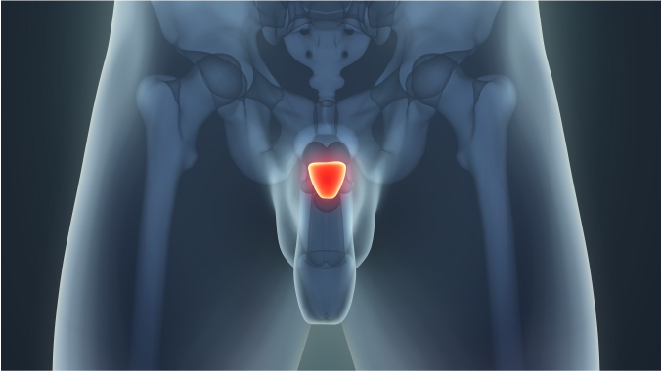Prostate cancer occurs in the prostate, a gland in the male reproductive system. Read more about prostate cancer here.
What is chemotherapy?
It is a systematic therapy which uses drugs to treat cancer. The drugs used in chemotherapy are known as chemotherapeutic drugs. These are given intravenously or taken orally. They aim at destroying the cancer cells by travelling through the bloodstream. It treatment is often recommended to break the tumours and to kill the malignant cells in the lymph nodes. The type of chemotherapeutic drugs prescribed to the patient depend on the spreading, type and stage of the cancer, and the tolerance and medical history of the patient.
How does chemotherapy work for prostate cancer?
Chemotherapy uses anticancer drugs to treat prostate cancers. These drugs are absorbed by the blood and virtually travel to all parts of the body to reach the cancer cells and kill them.
Chemotherapy alone is often not recommended to treat prostate cancer. It is combined with other procedures like surgery or radiation to give successful results. Read more about surgery for prostate cancer here
When can chemotherapy be given?
Chemotherapy is prescribed for advanced stages of prostate cancer that has not responded to hormone treatment. It is often recommended to treat metastasized and recurrent prostate cancer. Depending upon the stage and type of cancer, tolerance of the patient towards the drugs and overall health of the patient, chemotherapy is given:
- As a combination with other treatments: To treat prostate cancer, chemotherapeutic drugs are given in combination with other treatments. Read more about drugs for prostate cancer.
- Palliative therapy: Chemotherapeutic drugs are also given to relieve the patients from symptoms and shrink the tumours of the cancer.
How chemotherapy is given?
Chemotherapy is given in cycles, depending on the drugs used, each cycle contains one or more treatment sessions followed by a rest period for the patient to recover and prepare themselves for the next cycle.
Intravenous:
Chemotherapeutic drugs are given intravenously, the drugs are injected into the veins and sometimes into the larger muscle.
- Cannula: A small, thin tube or cannula is inserted in the veins of the forearm which is fixed temporarily.
- Portable infusion pump: These are small pressure pumps which are used to deliver the drug at a slower pace.
- Port-a-cath: This is also known as an implantable port or a subcutaneous port. It is used for patients who require constant or frequent administration of chemotherapy. This system is used to eliminate the discomfort caused by other systems.
- Central lines (tunnelled catheters): These are placed through the skin in the middle of the chest. They are pushed through the subcutaneous tissue and inserted into the superior vena cava. The catheters have lumens or entrances that facilitate extraction of blood samples and giving the drugs simultaneously.
Types of chemotherapy for prostate cancer:
Depending on the diagnostic results, chemotherapeutic drugs are prescribed to the patient. Following the chemotherapeutic drugs used for treating prostate cancer.
Docetaxel:
This chemotherapeutic drug is often used in treating advanced stages of prostate cancer. It is given alone or in combination with hormone therapy. Docetaxel is also prescribed when hormone therapy has not shown successful results.
Cabazitaxel:
This drug is given as a second-line chemotherapy because it is prescribed post the usage of another chemotherapeutic drug. Cabazitaxel is prescribed for advanced prostate cancer which has been treated with hormone therapy. It is used after the usage of docetaxel.
Mitoxantrone:
Mitoxantrone is an anticancer drug which is given intravenously for every three weeks. It aims at shrinking the tumour. This drug is often used as a part of palliative care or second-line chemotherapy to relieve the patients from the symptoms and pain caused by the cancer. It has no good survival rate in completely treating prostate cancer.
Side effects of chemotherapy for prostate cancer:
Since chemotherapy is a systematic therapy, it treats all the cells of the body in the same way. In the process, healthy cells are affected too due to which the patients experience a lot of side effects during or after using chemotherapeutic drugs. Following are the side effects of chemotherapy for prostate cancer:
- Nausea and vomiting
- Hair loss
- Loss of appetite
- Mouth sores
- Diarrhea
- Constipation
- Skin problems (sunburns, rashes ulcers)
- Falling off of nails
- Reduced fertility
- Lowered blood cells (causing anemia, infections, and easy bleeding and bruising)
- Central Nervous System problems (confusion, depression, headache and ringing in the ears)
- Neuropathy (numbness and tingling of hands and feet
Most of the side effects are short term and go away immediately after the treatment is stopped or after a very few weeks, but the patient has to cope up with the long term side effects which might have their impact for their entire life.
On experiencing any of the above symptoms or other changes in the body, a doctor has to be consulted immediately. Read more about the follow up for prostate cancer after treatment here.
Outlook:
The most recommended drug of all the chemotherapeutic drugs to treat prostate cancer is docetaxel. In most of the cases, this drug is combined with a steroid, prednisone. When the body of the patient does not respond to becomes resistant to this combination, Cabazitaxel is routinely prescribed as a second-line chemotherapy and is also used in first line setting.
These drugs can relieve the patients from the symptoms and pain caused by the cancer. Read more about the treatment outcomes of prostate cancer here.




